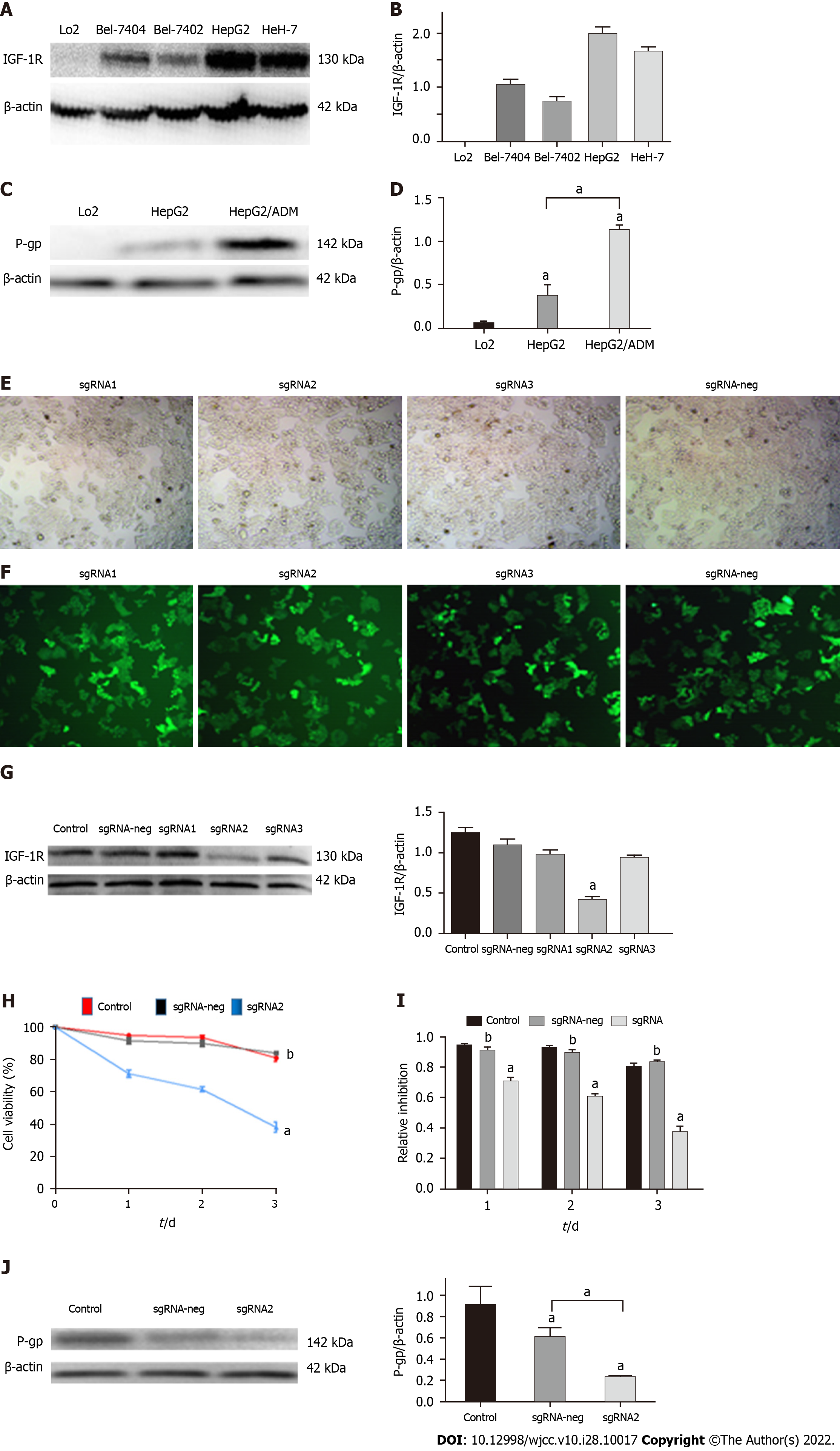Copyright
©The Author(s) 2022.
World J Clin Cases. Oct 6, 2022; 10(28): 10017-10030
Published online Oct 6, 2022. doi: 10.12998/wjcc.v10.i28.10017
Published online Oct 6, 2022. doi: 10.12998/wjcc.v10.i28.10017
Figure 2 Editing IGF-1R on effects of HepG2 cell proliferation and P-glyco protein expression.
A: The insulin-like growth factor-1 receptor (IGF-1R) expression among human LO2 cells, hepatocellular carcinoma Bel-7404, Bel-7402, HepG2, and HeH-7 cell lines; B: The relative ratios of IGF-1R to β-actin from Figure 2A; C: The P-glyco protein (P-gp) expression in human HepG2 cells and HepG2/ADM cells; D: The relative ratios of P-gp to β-actin from Figure 2C; E: HepG2 cells (black & white) were transfected by the sgRNA1, sgRNA2, sgRNA3, and sgRNA-neg plasmids using the Crispr/Cas9 system. F: HepG2 cells (fluorescent) transfection efficiencies of the sgRNA1, sgRNA2, sgRNA3, and sgRNA-neg plasmids; G: The IGF-IR expression in HepG2 cells of the different transfected groups: Upper, IGF-1R analyzed by Western bolting; Down, the relative ratios of IGF-1R to β-actin; H: The inhibiting curve of HepG2 cells with specific sgRNA2 transfection in a time-dependent manner; I: The bar graph corresponding to Figure 2H; J: The significant decreasing of P-gp expression in HepG2/ADM cells transfected with sgRNA2 plasmids. aP < 0.05; bP < 0.01.
- Citation: Yao M, Cai Y, Wu ZJ, Zhou P, Sai WL, Wang DF, Wang L, Yao DF. Effects of targeted-edited oncogenic insulin-like growth factor-1 receptor with specific-sgRNA on biological behaviors of HepG2 cells. World J Clin Cases 2022; 10(28): 10017-10030
- URL: https://www.wjgnet.com/2307-8960/full/v10/i28/10017.htm
- DOI: https://dx.doi.org/10.12998/wjcc.v10.i28.10017









